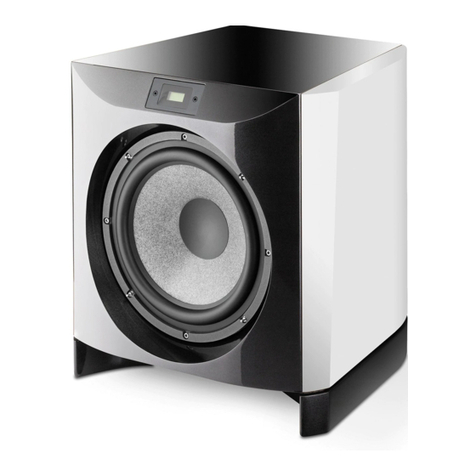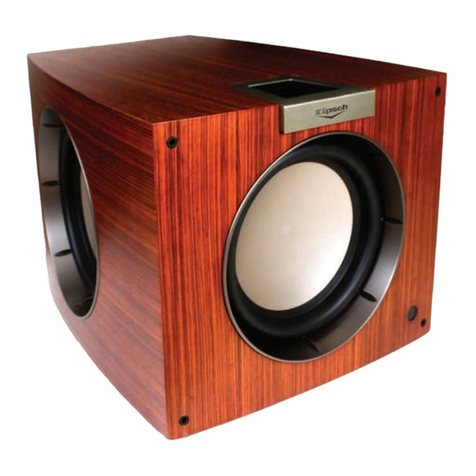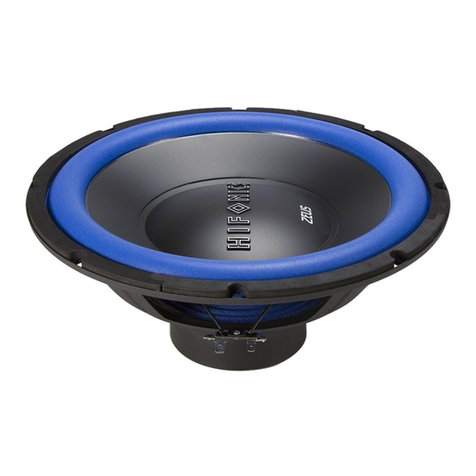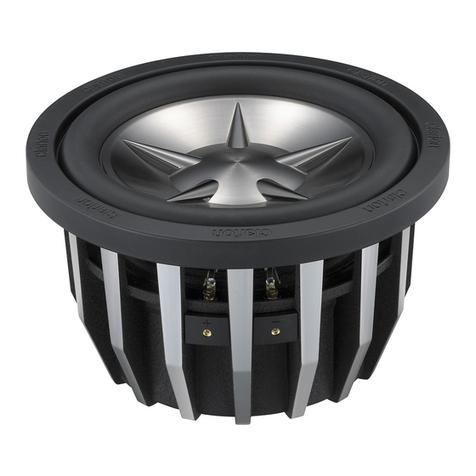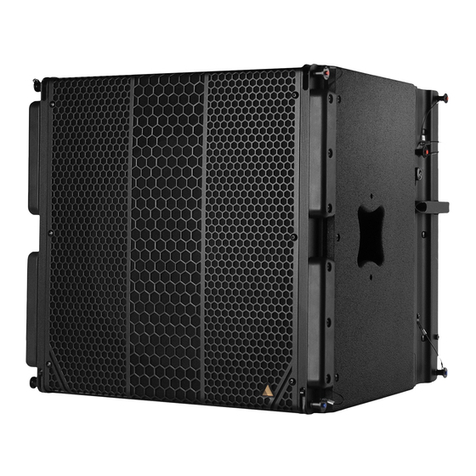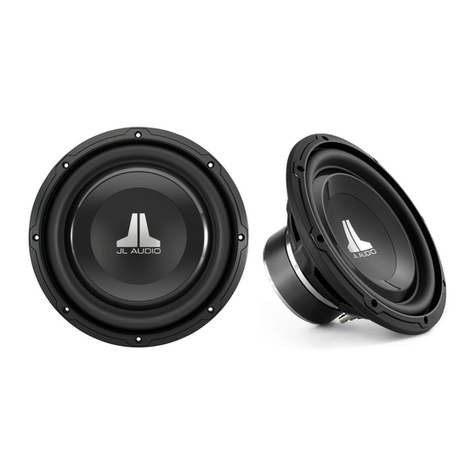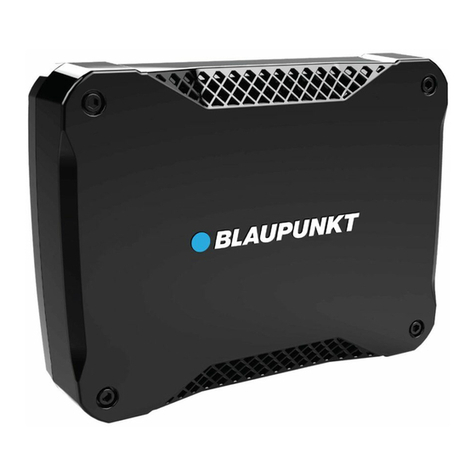GO Audio SB-3 User manual

INSTALLATION MANUAL FOR GO Audio SB-3 SUBWOOFER
PLEASE CAREFULLY READ THESE INSTRUCTIONS BEFORE INSTALLING YOUR PRODUCT
1. Safety Precautions
•Please follow all instructions in this manual.
•Important: The SB-3 is NOT intended for overhead use. Overhead use may result in injury or death. If you need to mount
your subwoofer above occupied areas, please contact GOaudio and we can build you a version that will be suitable for your
needs.
•The SB-3 must be attached to a wall or other secure surface. It must not be left freestanding, as this may result in injury,
death or damage to the loudspeaker or other equipment.
•Please use a mount that is rated for the intended load: 40 lb rating for SB-3.
•The SB-3 is not intended for use in damp or wet environments. Installing these loudspeakers in damp or wet environments
will void the warranty and may cause a dangerous situation.
2. Loudspeaker Placement and Aiming
•Proper placement requires that you understand the physical characteristics of subwoofers.
•It is recommended that you use at least one SB-3 per pair of SA-6 line array speakers or at least one SB-3 per SA-12.
•The SB-3 has basically an omnidirectional coverage pattern, however placement is still critical. You can increase its
efficiency by placing it in or near a corner. Even more efficiency can be achieved by placing it at or near the intersection of
three surfaces.
•Subwoofers are not "line-of-sight" devices. You can place them out of sight, however they should be placed as close to their
associated full-range speakers as possible. Otherwise, problems with localization of sound may result. You may, however,
want to keep them away from open microphones.
•The SB-3 is a moderate-throw device meaning that you should not expect it to cover more than about 30 or 40 feet into a
room. Additional penetration (and some directionality) can be achieved by stacking multiple units into a vertical array. (Be
sure to follow proper mounting techniques as outlined in this manual.)

3. Mounting Options
•The SB-3 is provided with four 1/4-20-threaded mounting holes that accept a standard 200mm VESA mount. Please observe
the manufacturer's rating on the mount. A 40 lb rating is required for the SB-3.
•Follow the instructions that come with the VESA Mount. Generally speaking, you will begin by separating the mount into
two pieces. The front portion will attach to the loudspeaker and the rear portion to the wall. Please make certain that the
wall you mount it to is capable of supporting the load. We recommend that you use an attachment method rated at least
double the combined load of the speaker and mount.
•The SB-3 is intended to be wall-mounted with no downward tilt. It can be mounted horizontally or vertically. For instance, it
can be operated on its side along the front of a stage.
•The SB-3 can be mounted above or below an SA-6 or above an SA-12 (generally, the bottom of an SA-12 will be close to the
floor).
4. Connection Options
•The SB-3 is connected using the double set of five-way binding posts on the rear. For easy connection and disconnection,
use a connector such as the Pomona Electronics MDP stackable double banana plug.
•The SB-3 uses a dual-voice-coil driver (and two passive radiators). Out of the box, the impedance of the SB-3 is 4Ω. It can
also be wired for 16Ω. For 16Ω operation, remove the two inter-terminal straps and connect a wire from the black terminal
at the top connector to the red terminal on the bottom connector. Now connect your amplifier to the two unoccupied
terminals.
A third option is also available for small systems. You can connect the two outputs of a stereo subwoofer amplifier each to
one of the voice coils. Each voice coil has an impedance of 8Ω.
•The number of SB-3s that you can connect to a given amplifier and the power rating of the amplifier both depend on
whether you wire them for 4Ω or 16Ω operation. Both the minimum impedance that the amplifier is capable of driving and
the maximum voltage that the amplifier is capable of producing are important. A 2Ω-capable amplifier rated at 150-250
Watts into 4Ω can drive up to two 4Ω SB-3s per channel. A 2Ω-capable amplifier rated at 450-600 Watts per channel into 4Ω
can drive up to eight 16Ω SB-3s per channel. A 4Ω-capable amplifier of the same power rating can drive one 4Ω SB-3 (150W)
or four 16Ω SB-3s (450W). For quiet environments where high output levels are never going to be required an amplifiers
rated as low as 100 Watts per channel into 4Ω can be used, however damage to the speakers may result if this amplifier is
driven heavily into clipping.
•Each 4Ω SB-3 should have its own homerun speaker wire. Wire gauge should be calculated to minimize line-related losses
(total wire resistance should never exceed 5% of the nominal load impedance). Generally, #14 or #12 wire should be used.
16ΩSB-3s can be run up to four per homerun with the same wire gauge requirements. Single homerun 16Ω SB-3s can be
connected with #16 or #14 wire.
•Do not run speaker lines parallel to low-level audio signals (mic or line-level) as oscillation and subsequent poor
performance of failure may result.

5. Crossover, Equalization and Limiting
•To minimize damage due to over-excursion, the signal going to an SB-3 should always be high-pass filtered at a minimum of
40 Hz. When used with the SA-6, the minimum crossover frequency should be 150 Hz. With the SA-12, the minimum
crossover frequency should be 100 Hz. In both cases a 24dB/Octave Linkwitz-Riley filter is recommended.
•No preliminary equalization is required for the SB-3. In a half-space measurement it has a flat frequency response from 40
Hz to about 800 Hz, though it is not recommended that it be used above about 300 Hz. Its relative gain (compared to the
SA-6 or SA-12) will be a strong function of room acoustics, speaker placement and number of drivers used (and their
proximity to each other).
It is advised that you do a proper analysis and equalization once the speakers have been mounted in the room and the
acoustical environment has stabilized (i.e. furniture, carpeting and wall treatments in place).
•It is always a good idea to add limiters in front of your amplifiers. These should be set so that they do not operate except
occasionally during normal use, but begin to operate during louder passages. Besides protecting your loudspeakers this has
the potential to make the system sound better when driven hard.
Important Note: If the SB-3 sounds bad at higher levels, chances are you’re over-driving it. If it makes loud popping sounds
there is over-excursion and the speaker will fail after a surprisingly short time.
6. Troubleshooting
•The SB-3 consists of one dual-voice-coil active driver (center) and two passive radiators (top and bottom). At higher
frequencies, it is normal for little or no sound to come out of the passive radiators. It is also normal for the passive radiators
to move in the opposite direction relative to the active driver.
•If the two voice coils are wired out of polarity with each other, little or no sound will come out and you risk overheating the
voice coils. If multiple SB-3s are used it is important that they all be wired with the same polarity or they will try to cancel
each other out. The polarity of the subwoofers relative to whatever full-range speaker they’re use with is a function of the
type of crossover you use as well as the relative placement of the various drivers and the environment where they’re
placed. You may want to experiment with this to see what sounds/measures better.
•The voice coils can be wired either in series or in parallel. If you suspect a problem, make sure both voice coils are
operational by testing them separately.
www.goaudio-us.com
386-258-9958
Table of contents
Popular Subwoofer manuals by other brands
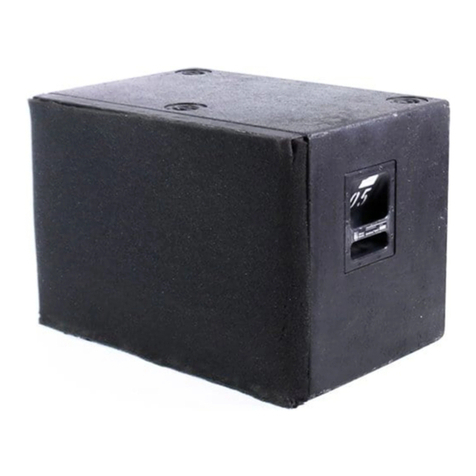
Meyer Sound
Meyer Sound UltraSeries Subwoofer USW-1 Specifications
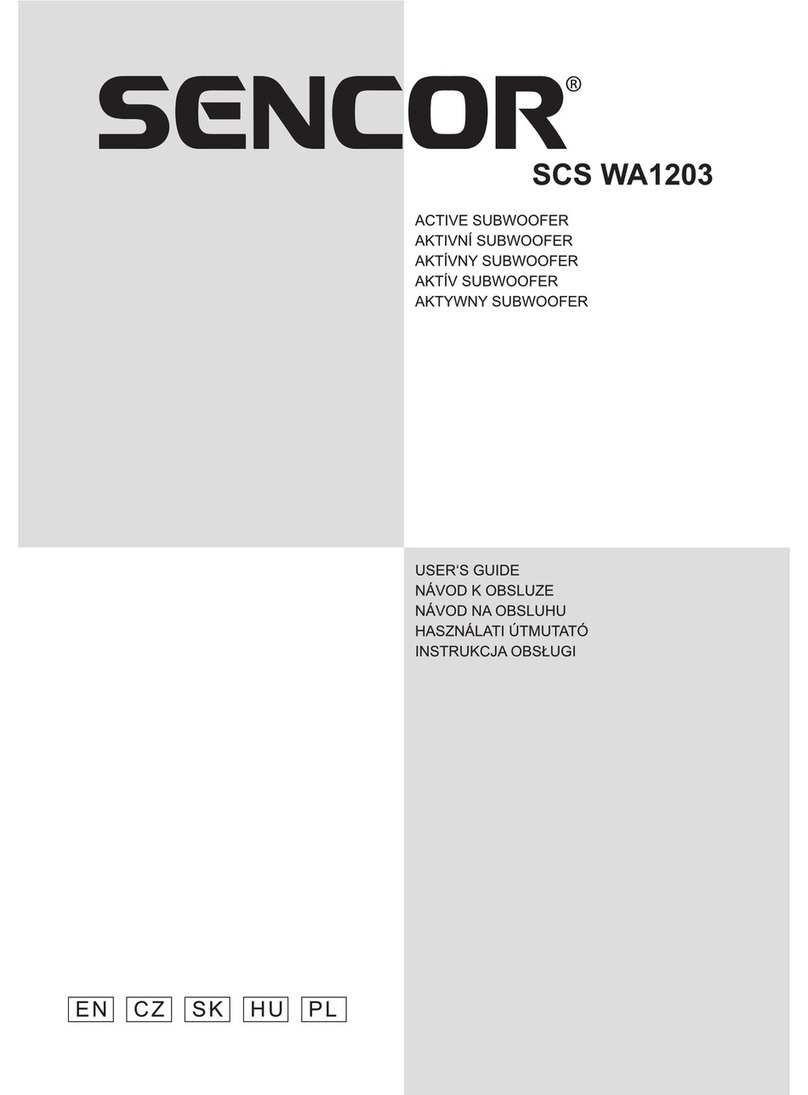
Sencor
Sencor SCS WA1203 user guide
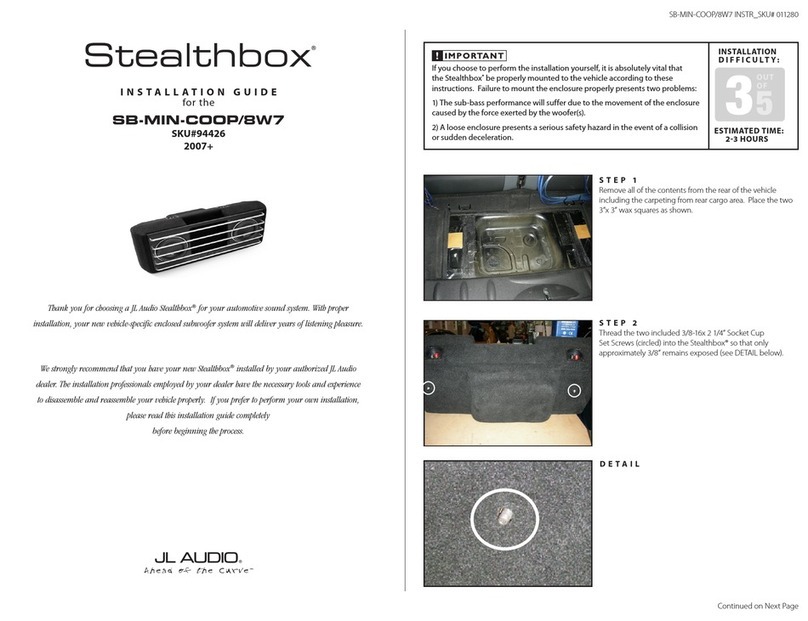
JL Audio
JL Audio Stealthbox SB-MIN-COOP/8W7 installation guide
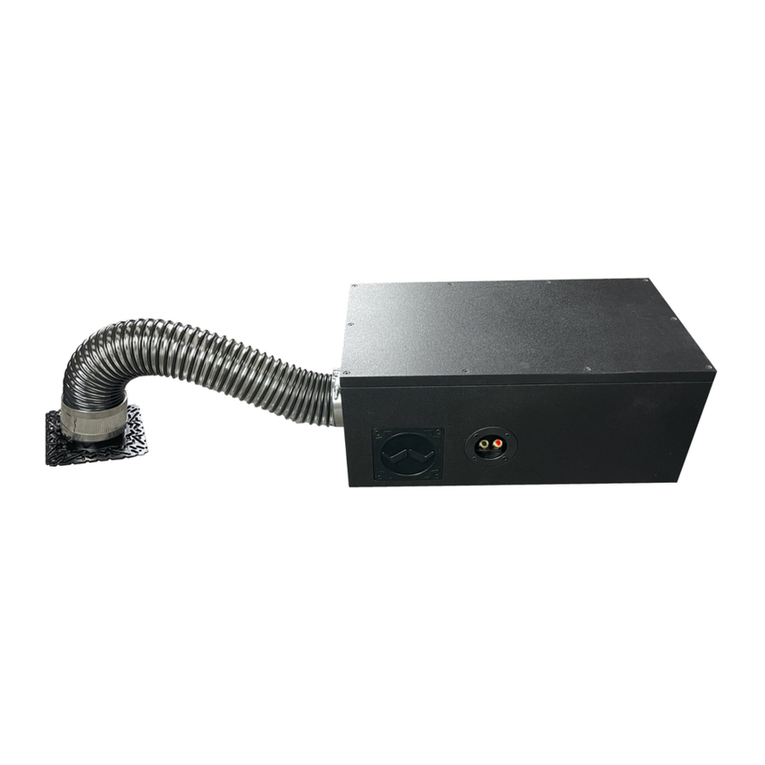
Wisdom
Wisdom Sage Cinema Series Installation and owner's manual
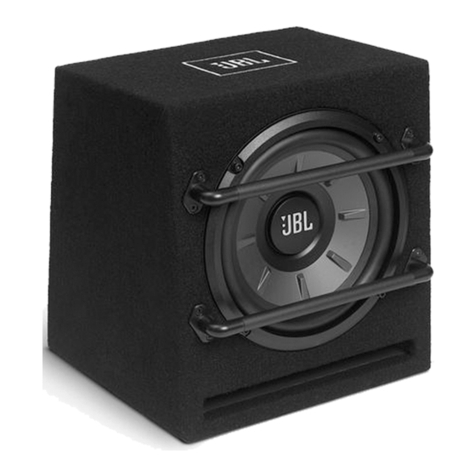
Harman
Harman JBL Stage 800BA quick start guide

Sonus Faber
Sonus Faber GRAVIS VI owner's manual
